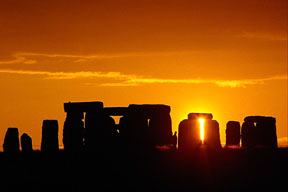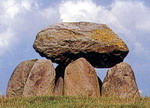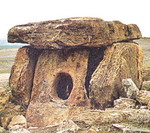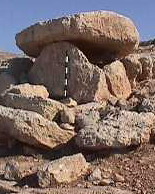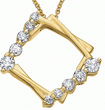BAMBU Latest Issues
BAMBU-14
See also:
BAMBU Archives: Contents
Brit-Am Megalithic Bulletin Update (BAMBU)
NEWS AND INFORMATION
Tracing The Israelite Paths of Migration
according to the Directions of the Prophet Jeremiah 31:21
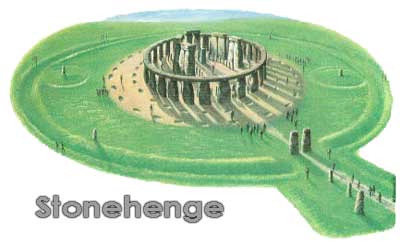
Dolmens and Megaliths
BAMBU-14
Brit-Am Megalithic Bulletin Update
Contents:
1. Stone Circles in Ireland
2. Megalithic
Monument Similarities Illustrated Israel-North Germany
3. Stonehenge in the Golan, Israel
1. Stone Circles in Ireland
http://www.irishmegaliths.org.uk/seanchlocha4.htm
Nice article with good photos. provides a short overall picture,
a bit New Age in tone but bearable.
see also:
Bronze Age astronomy: new survey, new horizons
M. Wilson
http://www.antiquity.ac.uk/ProjGall/wilson/index.html
2. Megalithic Monument Similarities
Illustrated Israel-North Germany
http://www.braasch-megalith.de/1-dolmen-salomon-tempel.html
a.) the Dolmen of Lehmsieck. Schleswig-Holstein
b.) the "bed" of the king Og (Dtn 3.11) Aman/Jordanien
c.) Palestina, al-Murayghat, some encirceld by stone circle.
Extract:
About 1000 years later in the 3th millennium thousands of dolmen were
built in Palestine being comparable in form and size to those in northern
Europe. Supposed to be symbols of an old "European" natural religion.
Facit: Archeological findings may support the view that there could be a
relation between the supposed temple of Salomon - build by order of
Salomon to to the Phoenician Hiram - and a religion of dolmen- builders.
Problem :The HImmelsscheibe and GILGAL
two stone circles both with an ~90 degree sector in the outer rim.
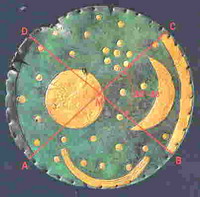
(a)
|
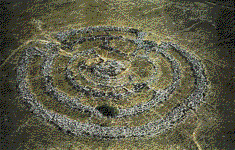
(b)
|
Problem :The HImmelsscheibe and GILGAL
two stone circles both with an ~90 degree sector in the outer rim.
The Himmelsscheibe is supposed to symbolize the earth as a flat disk.
The outer rim being the horizon showing two marked sections forming
an angle of 82 degree. (A -D) -(B-C) . The exact run of the sun between
winter - summer solstice. At the bottom a boat supposed to be the sun
barque. The disk a symbol of a Northern sun religion.
Problem:
The GILGAL stone circle on the Golan Height in Palestine shows a
compareable section of ~ 90 degrees
Both circles with an ~ 90 degree section in the outer rim
In 1968 Professor Yonathan Mizrahi of the Department of Anthropology at Harvard
University and Prof. Anthony Aveni of Colgate University discovered that in 3000
BCE, the first rays of the summer solstice would have appeared directly through the
northeast opening as seen from the central tumulus. At the same time, the southeast
opening provided a direct view of Sirius http://www.
The GILGAL circle is surrounded by numerous megalithic dolmen.
Likely to assume that the GILGAL circle is of megalithic origin.
(Dorian- Phlistine ?)
3. Stonehenge in the Golan, Israel
The wheel of giants
By STEPHEN GABRIEL ROSENBERG
http://www.jpost.com/servlet/Satellite?cid=1236764165362&pagename=JPost/JPArticle/ShowFull
Extracts:
After the Six Day War, when the IDF conquered the Golan Heights from Syria, it
did not take long for the archeologists to follow behind the infantry. In fact,
some of them were the infantry and saw "wonderful things," in the epic words of
Howard Carter, as he first peered into the tomb of Tutankhamun in Egypt 45 years
earlier.
There are five stone rings with an outer diameter of about 150 meters. The
circles are all of the black basalt stone and vary in size from small field
stones to huge megaliths.

Photo: Israel Antiquities Authority
Seeing what they saw, it was not long before archeological expeditions started
to investigate the more obvious Roman and Byzantine remains, but it was another
20 years, in 1987, before a group of scholars put together the Land of Geshur
Archeological Project, which attempted to evaluate the settlement patterns and
economic context of the region over a period of more than 4,000 years before the
common era. To do this they concentrated on five sites, the best known of which
was at Kibbutz Ein Gev, and the least known, the megalithic stone circle of Rujm
el-Hiri.
Rujm el-Hiri, also called Galgal Harefaim, is one of the most enigmatic
monuments in the Near East. Its name in Arabic means "mound of the wild cat" and
the Hebrew denotes "the giants' wheel," both names well deserved, seeing that
"mound" implies a burial mound and "wheel" stands for a stone circle. Even the
wild cat has significance, because the burial mound is surrounded by five stone
rings, which could be considered the tracks of a mad cat running around its prey
in ever-decreasing circles.
The stone circle was first discovered in 1968 by Yitzhaki Gal, a local surveyor,
on the volcanic plateau of the Golan that is dotted with thousands of Middle
Bronze Age (4,000 years ago) tombs called dolmens, literally "tables of stone,"
formed by a large slab resting on three stone uprights to form a protected tomb.
Serious investigation and sample excavations started in two seasons in 1988 and
1990 and work has continued sporadically ever since, and today is being
conducted by Michael Freikman of the Hebrew University of Jerusalem. But to date
no consensus has yet been reached to explain the monument's construction or its
location at this remote spot.
Many stone circles are located throughout the ancient world and most of them
consist of impressive monumental uprights standing in something like a circle,
or two circles, one inside the other, like Stonehenge in Britain, and usually
without a central feature. But Rujm el-Hiri is different. It is made of walls
rather than individual stones or megaliths. It boasts multiple rings around a
central mound, and the sight of it from the ground is hardly impressive.
There are five stone rings with
an outer diameter of about 150 meters. The circles are all of the black basalt
stone of the volcanic plateau and they vary in size from small field stones to
huge megaliths weighing up to 5.5 tons. The rings are centred around a raised
mound that rises up to seven meters above the plain. Excavations here have
revealed an elaborate tomb, which the first excavators held to be of a later
date than the main circles. On the basis of some Bronze Age jewelry found in the
mound, they said the tomb was built after the construction of the main monument.
THERE ARE two entrances to the outer circle, one to the northeast and one to the
southeast. The first one leads to a passageway that is aligned with the entrance
to the tomb and this has suggested an astronomical alignment with the midsummer
solstice of June 21. That makes it akin to the ancient chambered tomb of Maes
Howe on the Orkneys in Scotland, though there the passageway is so aligned that
on the midwinter solstice of December 21 the rising sun shines directly into the
back of the inner chamber each year. The alignments at Rujm have not yet been
proven astronomically, but the sun does rise between two of the eastern
megaliths on June 21.
The rings of basalt stones form "wheels" that are connected by radial walls,
like spokes, at irregular intervals. They divide the circular areas into unequal
segments, as if these were standing areas for clans of different sizes gathered
around the central mound, or for their animals corralled there for an annual
festival. The fact is that the thousands of stones, carefully laid in concentric
circles, must have been the effort of many clans or tribes working in harmony
under some kind of unified leadership and to a prearranged plan.
From the on-site
pottery it is clear that the monument was still used in the Late Bronze Age and
even as late as Roman-Byzantine times, less than 2,000 years ago. As for the
central mound, judging by the few precious relics left behind by early tomb
robbers, that became a burial place in about 1300 BCE, when a great chieftain
was buried there with his bronze arrowheads and golden earrings.
For him (or her?) they made a semi-undergound chamber with large flat stones
corbeled out one above the other and capped off by a massive slab to form a
primitive dome, a kind of super dolmen, fit for a real leader, a king or even a
queen.
It could have
been some kind of meeting place for ceremonial activities, perhaps connected
with an important astronomical event, like the winter or summer solstice. It was
always important for farmers to know how to calibrate their well known lunar
calendar, which they could observe every month, with the more elusive solar
year, which regulated their crops.
There are five stone rings with an outer diameter of about 150 meters. The
circles are all of the black basalt stone and vary in size from small field
stones to huge megaliths.
Photo: Israel Antiquities Authority
However, there is no evidence here of the standing stones that might have set a
visual correlation for the rising summer sun, as at Stonehenge, and the
alignment that was found here between the northeast entrance and the passageway
to the central tomb, came a thousand years later than the original circles, so
perhaps it took them a thousand years of experimental sightings to get it right.
Or more probably there were some standing stones that later disappeared and were
replaced by the more reliable entry and passageway.
However, even that later alignment is still not proven and we remain left to
wonder what exactly the earlier builders were trying to achieve.
IN THE last year or so, Freikman has made an in-depth study of this enigmatic
monument. He has found that it is not unique; there are several other, though
smaller, double stone rings on the Golan, and all are centred around a mounded
tomb. It is just that Rujm is the largest one, with five rings.
And Freikman now claims that in the center of Rujm the tomb was built at the
same time as the rings. Tomb robbers took away the early as well as the later
remains, including jewelry and weapons, but in their haste they dropped one
Chalcolithic pin in the passageway and this, Freikman claims shows that the tomb
was the centerpiece of the original rings.
The writer is a senior fellow of the W.F. Albright Institute of Archeological
Research, Jerusalem.
Join the Brit-Am Ephraimite Discussion Group
Just Send an
e-mail
with "Subscribe" in the Subject Line
and in the Message Space
Main Page
Your Offerings and Orders for our Publications
